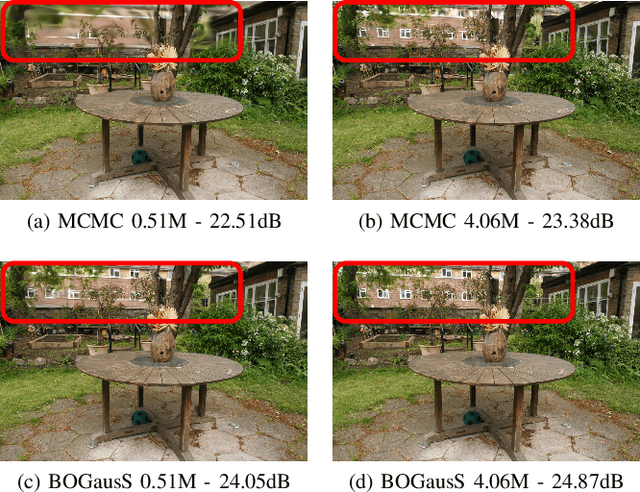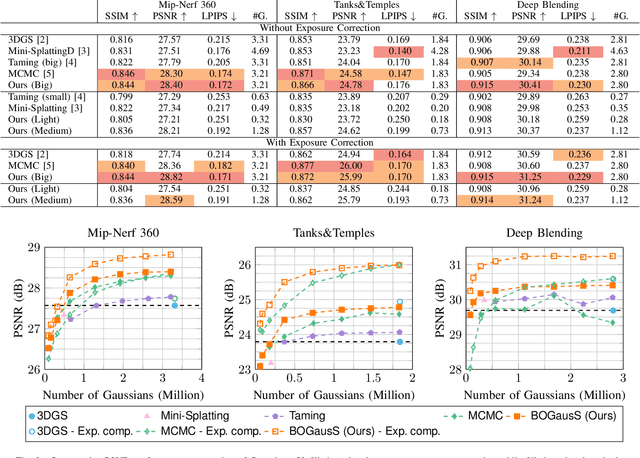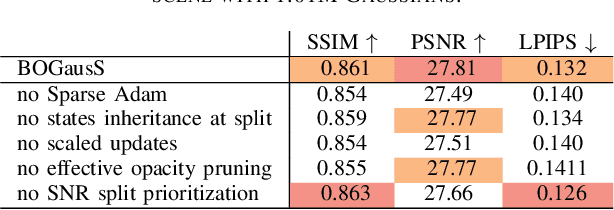Matthieu Gendrin
BOGausS: Better Optimized Gaussian Splatting
Apr 02, 2025


Abstract:3D Gaussian Splatting (3DGS) proposes an efficient solution for novel view synthesis. Its framework provides fast and high-fidelity rendering. Although less complex than other solutions such as Neural Radiance Fields (NeRF), there are still some challenges building smaller models without sacrificing quality. In this study, we perform a careful analysis of 3DGS training process and propose a new optimization methodology. Our Better Optimized Gaussian Splatting (BOGausS) solution is able to generate models up to ten times lighter than the original 3DGS with no quality degradation, thus significantly boosting the performance of Gaussian Splatting compared to the state of the art.
CAwa-NeRF: Instant Learning of Compression-Aware NeRF Features
Oct 23, 2023Abstract:Modeling 3D scenes by volumetric feature grids is one of the promising directions of neural approximations to improve Neural Radiance Fields (NeRF). Instant-NGP (INGP) introduced multi-resolution hash encoding from a lookup table of trainable feature grids which enabled learning high-quality neural graphics primitives in a matter of seconds. However, this improvement came at the cost of higher storage size. In this paper, we address this challenge by introducing instant learning of compression-aware NeRF features (CAwa-NeRF), that allows exporting the zip compressed feature grids at the end of the model training with a negligible extra time overhead without changing neither the storage architecture nor the parameters used in the original INGP paper. Nonetheless, the proposed method is not limited to INGP but could also be adapted to any model. By means of extensive simulations, our proposed instant learning pipeline can achieve impressive results on different kinds of static scenes such as single object masked background scenes and real-life scenes captured in our studio. In particular, for single object masked background scenes CAwa-NeRF compresses the feature grids down to 6% (1.2 MB) of the original size without any loss in the PSNR (33 dB) or down to 2.4% (0.53 MB) with a slight virtual loss (32.31 dB).
 Add to Chrome
Add to Chrome Add to Firefox
Add to Firefox Add to Edge
Add to Edge